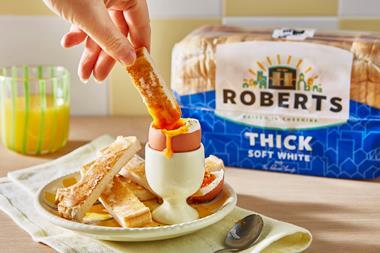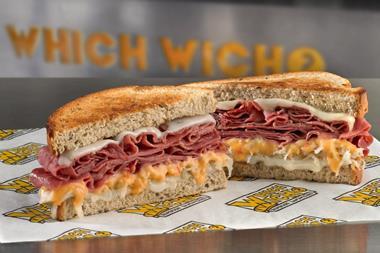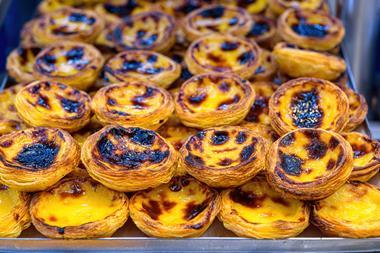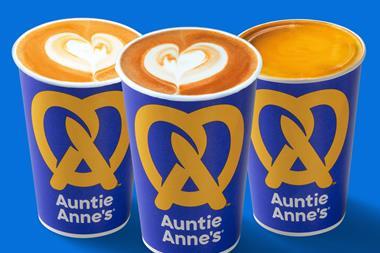Bakery supplier Puratos outlined some of the key trends shaping bakery in 2018 and beyond, as it celebrated the 25th anniversary of its Satin Crème Cake range last week (14 June).
The event, held at its site in Fringford, Oxfordshire, saw presentations from Puratos marketing manager Lydia Baines and food industry specialist Jane Milton who, among other things, has helped manage food and drink businesses that have gained funding from TV show Dragons’ Den.
Key flavours, ingredients and textures were among some of the areas they discussed, as well as how these are playing out in the bakery arena and beyond.
The speakers admitted not all of the trends covered were likely to have the longevity of salted caramel or unicorns – think pizza Yorkshire puddings – but many represented a shift in consumer demand.
Here are five of the top trends affecting bakery right now:
The next salted caramel is… salted caramel
Okay, the fact that salted caramel is still incredibly popular isn’t exactly news. But in the past month alone, Pladis has rolled out treats featuring the flavour, as has Brioche Pasquier, proving the trend isn’t going anywhere soon. And, Baines insisted the use of salted caramel was evolving.
“You can’t go anywhere without seeing salted caramel, so we looked at what the next salted caramel was and we came up with salted caramel,” she said. “It’s not just salted caramel, it is Cornish sea salted caramel, or Himalayan salted caramel – it’s about the provenance of the ingredients.”
Mixing caramel with other products, such as dates, is also gaining traction, noted Baines, as was the type of butter used, with some flagging up whether it was brown butter or salted.
Small bakers can take on the big players… and win
UK shoppers want quality and variety from their baked goods, said Puratos general manager Julia Darvill, something which she believed smaller players could deliver.
“We actually eat more cake now than we have ever eaten before and that’s not just because there is more of us. Per capita it is still in growth and we’re one of the only nations that can say that,” she said. “This is because we want difference, we want variety.”
There are several key things that should be considered when developing products, she added: the occasion and time of day at which they will be consumed; the wow factor, as consumers expect more from their products; variety, both across ranges and regionally; quality, making sure products are fit for purpose; and, flavour.
“We have an opportunity to take on any big boy for all of that space and share of the market with quality, artisanal and loved products,” she added.
Churros could be the next big thing
Churros are riding the popularity of premium doughnuts. Once simply the fare of fairgrounds and food trucks, the fried dough sticks are expanding their horizons.
“They are coming away from being a Spanish or Mexican product and moving more into the mainstream with flavourings and dips that match the situation. For example, if it’s an Asian restaurant you might see a matcha tea and white chocolate dips,” said Milton. “You can definitely premiumise them and make a lot more from them.”
Back in late 2016, Dominique Ansel proved it was possible to innovate in terms of the shape of churros as well creating the pyramid-shaped black and white sesame churros.
Churros are also gaining popularity in the supermarkets, noted Baines. “We’re seeing a lot of innovation in churros,” she said. “You can go into Iceland, Marks & Spencer, Tesco and Morrisons and buy churros that you heat up with your chocolate dipping sauce or you get places like Disneyland that do a marshmallow sauce or a sour watermelon – it’s a very easy on-the-go versatile product to make.”
Velvet is the texture of the moment
Velvet has long been associated with bakery thanks to the American classic that is red velvet cake, but Baines explained that it had gone way beyond the humble sponge cake to signify the finer things.
“Velvet really says luxury, it feels beautiful in your mouth whether its velvety fruits or velvety chocolate whirls – it helps describe a product in a very luxurious way,” Baines explained.
Playing into this are melt-in-the-middle products, whether it’s the classic fondant-style desserts or the more accessible on-the-go snacking products.
Crunch, she added, is also having a moment as consumers seek more than one texture from the things they are eating. In bakery, items such as honeycomb and cacao nibs can help achieve this.
Think about what you can add, not take away
With many companies flagging up their gluten-, dairy- and sugar-free products, it’s easy to get obsessed with what’s been taken out of a product. But Jane Milton argued that it was important to shout about what is in your products as well, particularly if they have functional properties.
“People are happy to eat cake if they can see there’s another thread – so if they can see that there’s something better for them in it,” Milton explained.
Adding ground almonds to brownies was one example she highlighted.
“Look at functionality. If you’re adding something as simple as ground almonds you’re putting in fibre, protein, magnesium and good fats. It’s not a difficult thing to sometimes swap out a bit of an ingredient, swap in something else and add value. When you can add value like that you can a) really differentiate yourself from other people and b) add more to your bottom line.”
But, she noted, it’s important to think about why you’re adding certain ingredients, highlighting the recent obsession with dates and brown rice syrup which don’t offer much in the way of sugar reduction. They are, at least, ingredients that consumers understand.
“If you add something that consumers understand and can visualise, when they see it on a label, then that product is more likely to be a success.”
































No comments yet